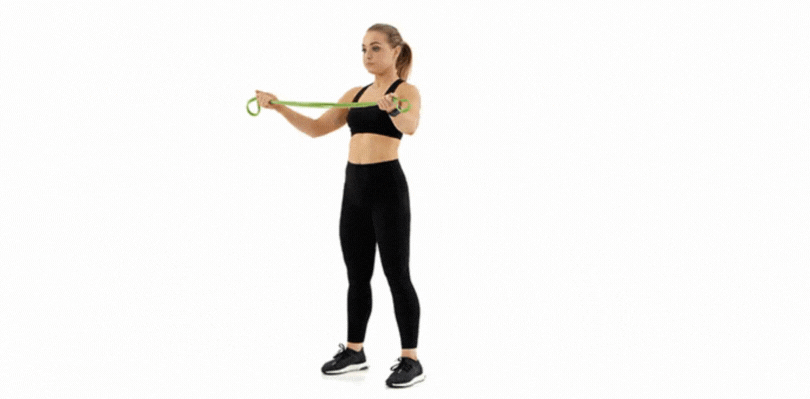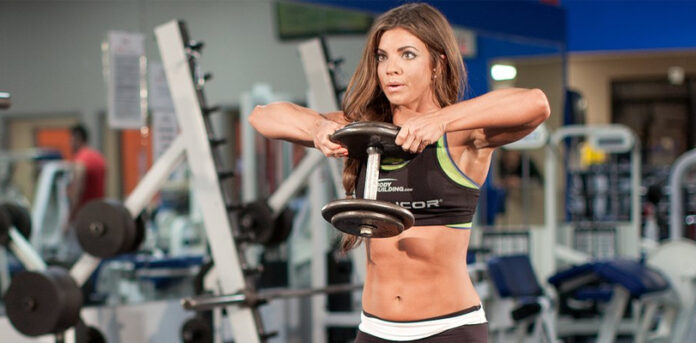Rear delt exercises for building muscle mass and strength are a common goal for many fitness enthusiasts. It is targeting specific muscle groups can help you achieve your desired physique. Rear Delt Exercises refer to a group of exercises specifically targeted at working the rear deltoid muscles in the back of the shoulder. By incorporating rear delt exercises into your workout routine, you can target these important muscle groups, improving shoulder stability, posture, and overall upper body appearance and performance.
These exercises help to improve the strength and mass of the rear delts. Which play an important role in shoulder stability and overall upper body posture. In this post, we’ll be focusing on the rear delts, a crucial yet often neglected muscle group in the shoulder region. By incorporating these amazing rear delt exercises into your workout routine. You’ll be able to build extra mass and strength, improving your overall shoulder appearance and performance in exercises like bench presses and pull-ups. Let’s get started!
Rear Delt Exercises
Bent-Over Reverse Dumbbell Fly’s

This exercise is a classic for targeting the rear delts. Start by holding a dumbbell in each hand, with your feet shoulder-width apart and a slight bend in your knees. Bend forward from the waist until your torso is parallel to the floor, keeping your back straight. From this position, slowly raise the dumbbells out to the sides until they are level with your shoulders, then lower them back to the starting position. Repeat for desired reps.
Face Pulls

Face pulls are a great exercise for targeting the rear delts, as well as the rotator cuff and upper back muscles. Begin by attaching a rope handle to a high pulley cable machine. Grasp the handle with both hands and step back until there is tension in the cable. Pull the handle towards your face, keeping your elbows elevated and out to the sides. Squeeze your shoulder blades together at the top of the movement, then lower the handle back to the starting position. Repeat for desired reps.
Reverse Fly’s

This exercise is performed using dumbbells and works the rear delts, as well as the upper back and shoulders. Start by standing with your feet shoulder-width apart, holding a dumbbell in each hand. Bend forward from the waist, keeping your back straight and your arms extended below you. From this position, raise the dumbbells out to the sides, keeping your arms straight and your elbows slightly bent. Squeeze your shoulder blades together at the top of the movement, then lower the weights back to the starting position. Repeat for desired reps.
Band Pull-Apart

Band pull-apart is a great exercise for targeting the rear delts, as well as the upper back and rotator cuff muscles. Start by standing with your feet shoulder-width apart and holding a resistance band in front of you with both hands. Keeping your arms straight, pull the band apart, bringing your hands out to the sides. Squeeze your shoulder blades together at the end of the movement, then slowly return to the starting position. Repeat for desired reps.
Remember to keep proper form and start with lighter weights, gradually increasing the resistance as you get stronger. Incorporating these exercises into your workout routine will help you build mass and strength in the rear delts, improving your overall upper body appearance and performance.
Muscles Used In Rear Delt Exercises
The primary muscle targeted in rear delt exercises is the rear deltoid muscle, located in the back of the shoulder. This muscle helps to control shoulder movement and stability and is crucial for overall upper body posture and balance.
In addition to the rear delts, several other muscle groups are also involved in rear delt exercises, including:
- Trapezius: This muscle, located in the upper back, helps to control shoulder movement and stability. It is involved in exercises such as face pulls and band pull-apart.
- Rhomboids: These muscles are located in the upper back and help to control shoulder movement and stability, as well as maintain good posture.
- Rotator Cuff: A rotator cuff is a group of four muscles that help to control shoulder movement and stability, and are involved in exercises such as face pulls and band pull-apart.
- Biceps: The biceps, located in the front of the upper arm, help to control shoulder movement and stability. Meanwhile, are involved in exercises such as reverse fly’s and band pull-apart.
By incorporating these exercises into your workout routine, you can effectively target the rear delts and avoid imbalances in the shoulder musculature. Additionally, strengthening the rear delts can also improve shoulder mobility and reduce the risk of injury during other upper-body exercises.
Benefits Of Rear Delt Exercises

Improved Shoulder Stability: Strengthening the rear delts helps to stabilize the shoulder joint, reducing the risk of injury during upper body exercises.
Better Posture: Building strength in the rear delts can help to correct imbalances in the shoulder musculature and improve overall upper body posture.
Reduced Shoulder Pain: Strengthening the rear delts can help alleviate shoulder pain and discomfort, particularly for individuals with rotator cuff injuries.
Increased Shoulder Mobility: Rear delt exercises can help to increase shoulder mobility, allowing for a better range of motion and flexibility.
Improved Appearance: By building mass in the rear delts, you can improve the overall appearance of your upper body and create a more aesthetically pleasing physique.
Better Performance in Other Exercises: Stronger rear delts can improve your performance in exercises. Such as bench presses, pull-ups, and rows, as well as other upper-body exercises.
Reduced Risk of Injury: By targeting the rear delts, you can help reduce the risk of injury during upper body exercises. Such as rotator cuff tears, by balancing the strength in the shoulder region.
Tips For Doing Rear Delt Exercises
- Warm-up: Before starting your rear delt exercises, it’s important to warm up the muscles in your shoulders and upper back. This can include dynamic stretching, foam rolling, or light cardio to increase blood flow and reduce the risk of injury.
- Proper Form: Maintaining proper form is key to getting the most out of your rear delt exercises. This includes keeping your back straight, and your elbows slightly bent. And your shoulder blades squeezed together at the top of the movement.
- Light Weights: When starting out with rear delt exercises, it’s important to start with lighter weights and gradually increase the resistance as you get stronger. This will help you avoid injury and focus on proper form.
- Isolation Exercises: Focus on isolation exercises, such as reverse fly’s and bent-over dumbbell fly’s, that specifically target the rear delts. This will help you build mass and strength in the area and reduce the risk of injury.
- Mix it Up: Mix up your rear delt exercises to prevent boredom and keep your muscles challenged. This can include incorporating different variations of exercises. Such as using resistance bands or cables, or incorporating different types of equipment, such as kettlebells or medicine balls.
By following these tips, you can ensure that your rear delt exercises are effective, safe, and enjoyable. Helping you to build mass and strength in the area and achieve your fitness goals.
FAQs
What are the benefits of rear delt exercises?
The benefits of rear delt exercises include improved shoulder stability, better posture, and reduced shoulder pain. Also, increased shoulder mobility, improved overall appearance, better performance in other exercises, and reduced the risk of injury.
What muscles are used in rear delt exercises?
The primary muscle targeted in rear delt exercises is the rear deltoid muscle, located in the back of the shoulder. In addition, the trapezius, rhomboids, rotator cuff, and biceps are also involved in rear delt exercises.
How can I get the most out of my rear delt exercises?
To get the most out of your rear delt exercises, it’s important to warm up the muscles in your shoulders and upper back, maintain proper form, start with lighter weights, focus on isolation exercises, and mix up your routine to prevent boredom and keep your muscles challenged. Additionally, following a well-rounded workout routine that includes a variety of upper-body exercises can help you achieve optimal results.

